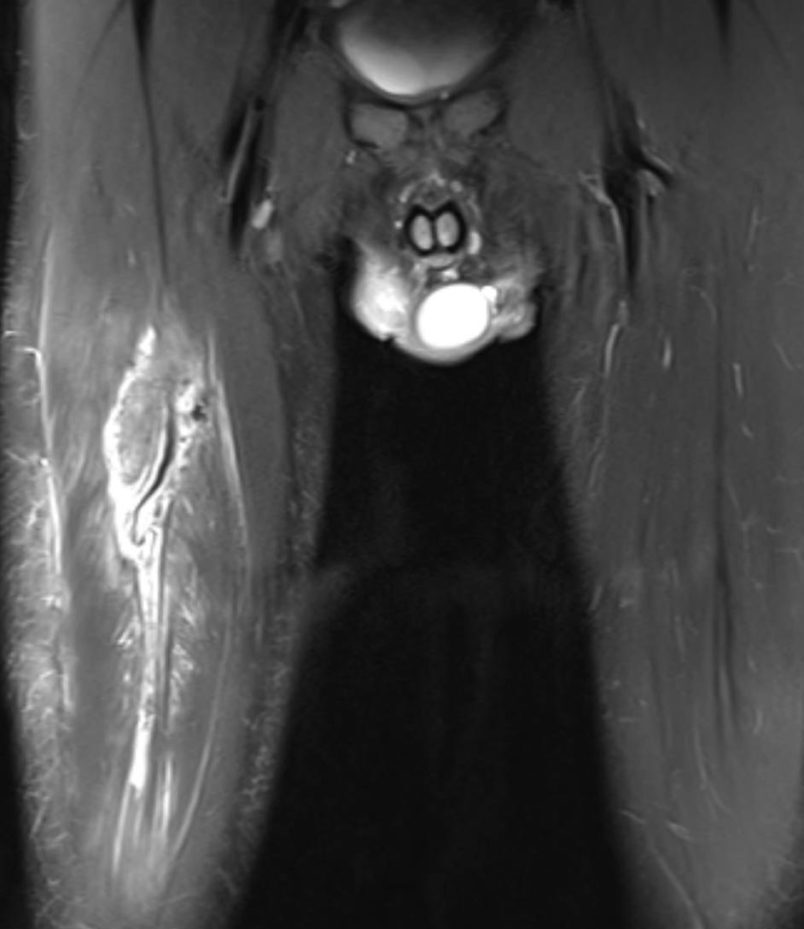
Duncan, 43, presents with a six-week history of a soft tissue mass in the right upper thigh.
This is non-tender and seems more pronounced when he extends the knee.
Two weeks before he noticed the mass, Duncan sustained an injury at soccer, experiencing an episode of sudden anterior upper thigh pain when taking a strike at goal.
He was unable to play on, but was able to hobble from the field.
He was treated with topical analgesia and a massage on the day of injury, and the pain settled over the next two weeks, though the mass developed as the pain eased. Duncan successfully resumed football two weeks ago.
On examination, gait is normal and he has normal quadriceps power bilaterally. With right knee extension, the visible mass (pictured) retracts.
The mass is firm, not inflamed or tender. There is no lymphadenopathy.
What is the most likely diagnosis?
Correct!
This is a complete rectus femoris tear, with the thigh mass representing proximal retraction of the bulk of rectus femoris, which retracts proximally with contraction of the quadriceps with knee extension.
Rectus femoris is the most susceptible of the quadriceps muscles to injury, because it is the longest and generates the most force.
It crosses both the hip and the knee joints, which means in the terminal phase of a kick, when the hip is flexed and knee extended, it is under forceful eccentric contraction while being passively stretched.
The central tendon is the most common site of injury, particularly in kicking sports. Distal and proximal injuries may occur with walking or running.
Differentials for an anterior thigh mass include lipoma, haemangioma, nerve sheath tumours, malignant fibrous histiocytoma and liposarcoma.
These space-occupying lesions seldom move with quadriceps action, unless they are intramuscular.
Ultrasound or MRI confirms the diagnosis and grade severity, as well as ruling out sinister pathology.
Treatment is typically conservative, with analgesia, graded weight bearing as tolerated, and physiotherapy to rehabilitate for return to play.
Surgery is typically only considered in cases of persistent functional limitation and weakness following conservative treatment.
